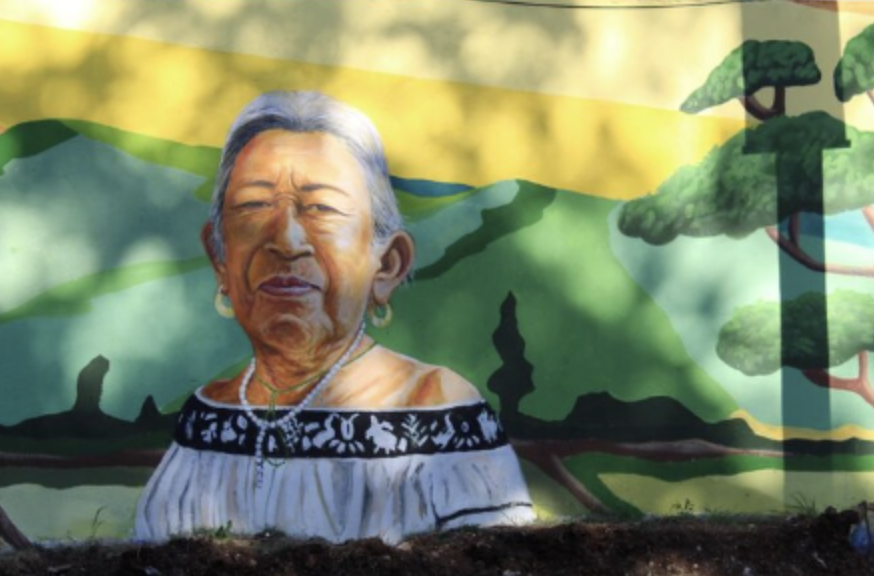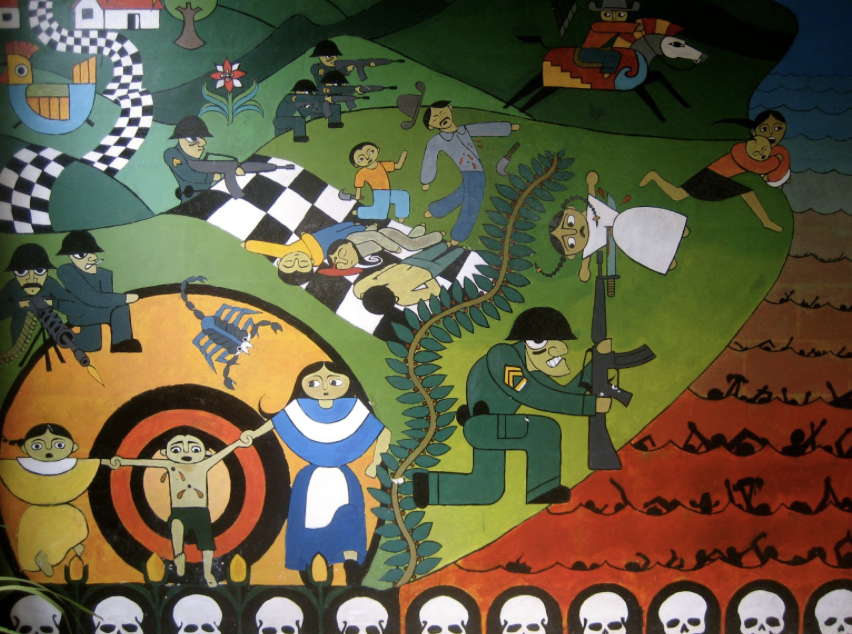Significance of Mural Art Projects Across Central America
Researcher & Writer: Fatima Moran
Editor: Maya Garcia
Graphics: Alejandra Quiroz
Across Central America, mural art projects serve as visual communication instruments that transform cultural heritage into tangible community assets.
Artists can convey a range of perspectives ascribing to the public history and evolving culture of a society through commissioned projects with local agencies or government entities.
Community-organized murals may also work to raise public awareness and memorialize suppressed histories.
Proyecto Mural Patriótico Belize @ 40, 2021
As a way to commemorate the 40th anniversary of Belize’s independence, 40 municipalities and local artists came together to depict the country’s rich natural heritage and diverse culture (Heritage Belize). This government-commissioned project aims to foster community pride by focusing on intersections of the past, present, and future of Belize.
Belize @ 40 en Belmopan
The art investment became a tool for civic engagement as more Belizeans were not only able to participate in the creative process, but also experience it in the course of daily life.
They interact with images of groups and individuals significant to their cultural heritage including but not limited to George Price, Philip Goldson, Yucatec Mayans, and the Garifuna people.
Massacre de Sumpul Mural Project, 2010
On May 14th, 1980, approximately 600 campesinos - including many women, children and elderly members - were killed in a military operation led by Salvadoran armed forces and a paramilitary group in Las Aradas, Chalatenango (Asociación Sumpul).
When the military operation began, many families tried to escape and ran towards the swollen Sumpul River. Individuals lost their lives by drowning, being dragged away by the current, or falling victim to the soldier’s gunfire as they attempted to flee into the surrounding bushes.
This commemorative mural was painted by a group of Sumpul Massacre survivors and victims’ relatives as a testimony of the massacre and as a collective effort to seek justice and can be found in the Museo de la Memoria Histórica de Arcatao.
By denouncing the Salvadoran state-sponsored human rights violations that occurred in this manner, the community members have contributed to the preservation of the historical memory of the department (Sembrando Semillas).
“Every day there are fewer of us who lived through the armed conflict, and the story will be buried along with the earth if we don’t share it”
SOURCES:
https://www.belizemayorsassociation.com/news/belize-at-40-patriotic-mural-project#
https://www.heritagebelize.org/blog/how-street-art-promotes-culture-and-heritage-in-belize
https://www.youtube.com/watch?app=desktop&v=7_xAqyH2a2M&feature=youtu.be
https://www.americansforthearts.org/sites/default/files/PublicArtNetwork_GreenPaper.pdf
https://nacla.org/memoria-historica-el-salvador-guerra-civil









